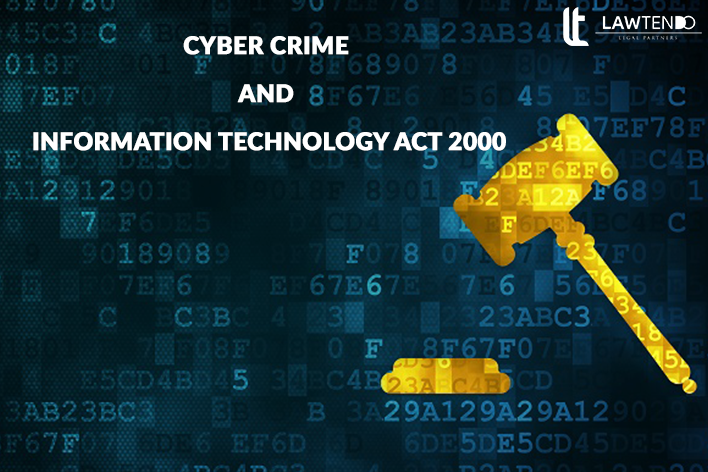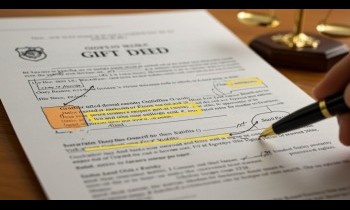Complete Guide on Information Technology Act 2000

Date : 31 Mar, 2021
Post By Advocate Ankeeta Appanna
India is the second-largest user of the internet in the world, the cybersecurity laws and legislations are contained in the Information Technology Act 2000 called the IT Act, and in the supporting rules and regulations. The act was enacted by redrafting the model law of the United Nations.The bill was passed in the budget session of 2000 and signed by President K. R. Narayanan on 9 May 2000. The definition of the act reads as: The IT act recognises transactions through electronic data interchange and through other electronic means. This means by using alternatives to paper enabled communication and facilitating electronic filing. The act amends the IPC, the evidence act, the Bankers Books Evidence Act and RBI Act and related matters Consult the best lawyer online The Act originally contains 94 sections, 13 chapters and 4 schedules. The laws apply to the whole of India. The persons belonging to other nationalities also come under the purview of the act. The act recognises transactions through electronic communication methods and through data interchange. It provides for securing data and information by avoiding illegal computer use. The act provides electronic means of communication rather than paper based communication. A major amendment was made in 2008, through the amendment offensive ;messages were penalised under section 66A. Introduces section 69 allowing interception or monitoring or decryption using computer resources. The act contains provisions dealing with pornography, child porn, cyber terrorism and voyeurism. Scope and application of the act: The act extends to the whole of India, the act also provides extraterritorial jurisdiction. As per the provisions of section 1(2) of section75 the Act is applicable to any offence or contravention committed outside India as well. If an offence involves a computer system situated in India, then irrespective of his/her nationality, the person is punishable under the Act. The act is not applicable to certain documents below under Section 1(4) of IT act 2000. Document executing negotiable instrument Negotiable Instrument Negotiable Instruments Act, 1881. Power of Execution of an Attorney. In creating trust under the India Trust Act. In Executing Will under the Indian Succession Act, 1925. In entering a contract for the sale of immovable or interest in it. Documents and transactions notified by the Central Government. Salient Features of The Act: The following are the features of the Act are, The act replaces Digital signature with electronic signature. It elaborates on offenses, penalties, and breaches. It lays down the Justice Dispensation Systems for cyber-crimes. The Act states that cyber café means facility provided to the public in the course of business. It directs the Cyber Regulations Advisory Committee. The act has its basis in IPC,The Indian Evidence Act, 1872, The Bankers’ Books Evidence Act, 1891, The Reserve Bank of India Act, 1934, etc. Provision to section 81 states that acts have an overriding effect.
Offences under the act: The IT act 2000 lays down cyber offences and provides punishment for the same. The classes of offences are: Tampering with the computer source documents: IT Act section 65 deals with tampering of computer source documents, Publishing obscene information in electronic form. This section punishment with imprisonment up to three year, or with fine which may extend up to two lakh rupees, or with both for such an offence. Hacking with the computer system: Section 66 deals with hacking with computer systems, according to this section, whoever commits hacking shall be punished with imprisonment up to three years, or with fine or both. Publishing obscene information in electronic form: Section 67 deals with the publishing information that is obscene in electronic form, according to section 67, whoever publishes or transmits or causes to be published in the electronic form on the first time will be punished with imprisonment for a term of five years and with fine and for second-time imprisonment for ten years and fine. Power of Controller to give directions: Section 68 deals with the power of controller to give directions, according to this section, any person who fails to comply with any orders will be punished with three years imprisonment and fine Direction to subscribers to facilitate decrypt information: If it is necessary for the interest of the nation it may allow the Government to intercept any information transmitted through any computer resource. Protected system: Section 70 deals with protected systems, according to section 70, any person who secures access or attempts to secure access to a protected system in contravention of act is punishable with imprisonment and fine. Penalty for misrepresentation: Section 71 prescribed punishment for misrepresentation with two years imprisonment and fine rupees, or with both. Penalty for breach of confidentiality and privacy: Section 72 deals with the penalty for breach of confidentiality and privacy, according to this section who breach confidentiality and privacy shall be punished with fine and imprisonment. Publication for fraudulent purpose: Section 74 deals with publication for a fraudulent purpose which prescribes punishment with imprisonment for a term which may extend to two years, or with fine. Act to apply for offense or contravention committed outside India Confiscation: Section 76 deals with confiscation, Anything related to the provisions of this Act, rules, and regulations framed there if contravened is liable to confiscation. Penalties or confiscation not to interfere with other punishments: The penalties and codification under the will not interfere with punishment the time being in force Power to investigate offenses: The act gives the power to Investigate offences to the government Section 66A of the IT act This section deals with cyber offences, Section 66 deals with computer related offences.If any person, dishonestly or fraudulently, does any act referred to in section 43, he shall be punishable with imprisonment for a term of 6 years and with fine. Section 66A deals with Publishing offensive, false or threatening information.Any person who sends by any means of a computer resource any information that is grossly offensive or has a menacing nature or false informations for causing annoyance, inconvenience, danger, obstruction, insult shall be punishable with imprisonment for a term which may extend to three years and with fine. From the time of its establishment section 66A attracted controversy because of its unconstitutional character.Because of its controversial nature Section 66A of the Information Technology Act, 2000 was struck down by the supreme court.The provision was intended to make posting "offensive" comments online a crime punishable by jail. Get in touch with the best lawyer online In 2008 a major amendment happened to the IT actIt was initiated at the Parliament to address certain drawbacks and deficiencies the original Act faced. The amendments help the act to deal with future demands in the sector. It contains provisions relating to data privacy and protection. The amendment was intended to make certain shortcomings of the act and to make the act keep up with emerging challenges. Even after the amendment we cannot say that the act is capable of dealing with all the challenges of the present world. The act needs further amendment to meet the dynamic challenges of the modern world. Under the guidance of Advocate Ankeeta Appanna, this article was written by Mr. Kamal M, BSc. LLB, Government Law College, Trivandrum





